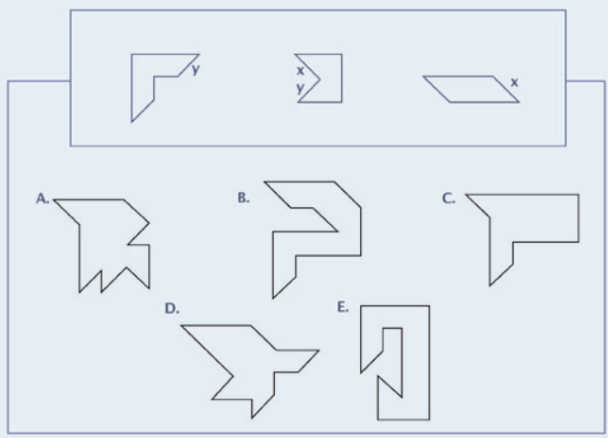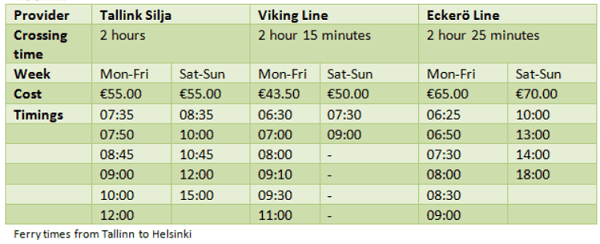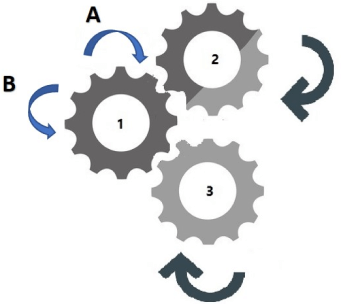 How To Pass the Raf Aptitude Test (AST) With Flying Colours
How To Pass the Raf Aptitude Test (AST) With Flying Colours
Recruitment for the Royal Air Force (RAF) can be quite an affair!
If you have made inquiries into the possibility of joining Britain's celebrated aerial military force, there's a good chance you've heard of the challenging seven-part Defence Aptitude Assessment (The RAF DAA), also known as the Airmen Selection Test (RAF AST) or simply the RAF Aptitude Test.
You may have also heard of the RAF Fitness Test, or the RAF Pre-recruit Training.
- So what do they all mean, and how can you prepare for them?
This page will break down the RAF recruitment process and provide you with necessary tips and advice on the RAF Aptitude Test.
💡 More preparation material is available on our RAF Aptitude Assessment PrepPack, which has helped hundreds of recruits surmount that obstacle.
Raf Aptitude Test PrepPack
- Diagnostic Test- Measure your starting level to track your improvement!
- 2 Simulation Tests
Additional Practice for each DAA section:
- 5 Verbal Reasoning Tests
- 4 Numerical Reasoning Tests
- 6 Work Rate Tests
- 3 Spatial Reasoning Tests
- 4 Electrical Comprehension Tests
- 4 Mechanical Comprehension Tests
- 8 Memory Tests
- 13 Guides & Video Tutorials
- Grand Total: 807 Practice Questions W/ Full Solutions!
✻ For other military exams, check out our pages on AOSB Preparation and ACT preparation.
What Is The RAF Aptitude Test?
The RAF Aptitude Test, also known as the Airmen Selection Test (AST) or more recently as the Defence Aptitude Assessment (DAA), consists of seven separate sections, each focusing on a different set of cognitive skills. It is a challenging exam that demands full concentration and high accuracy.
Your performance on this exam will set you on the course you will be following during your entire career with the RAF, so it is a good idea not to take it lightly.
The RAF uses this exam not only to determine whether you are qualified to join the force in the first place, but also to assess your strengths and weaknesses. If you do join, your results will likely influence the specific position you will hold with the RAF.
What does the RAF Aptitude Test Consist Of?
There are seven different sections on the DAA, each is timed separately. The sections are listed and explained below.
The RAF Aptitude Test will take place at your nearest Armed Forces Careers Office (AFCO) and requires you to clear your day. Overall, the test takes about 90 minutes to complete, with 148 questions across the 7 categories. Before and after the test, you will talk to a recruiter from the AFCO.
You’re not allowed to use a calculator or a dictionary during the tests. For the Numerical Reasoning test, you’ll be provided with a rough paper for working out your answers.

RAF Aptitude Test Practice Questions
Looking for some example questions to help understand what you will be facing?
Here are a number of RAF ADD samples to get you in the right mindset, one for each section:
Work Rate
The purpose of this section is to evaluate your ability to work quickly and efficiently under a large workload and a time crunch. You will be presented with a table containing three rows of cells. The cells are populated with letters, numbers and shapes. Each column represents a set of one letter, one number, and one shape that are interchangeable.
Next, you will be given 20 sequences of code. Using the key described, you will need to select an alternative sequence that carries the same meaning as the original. This part has a 4-minute duration.
RAF Work Rate Sample Question

According to the question:
'G' can be coded as either '6' or '✕'
'N' can be coded as either '5' or '✔'
'J' can be coded as either '3' or '✱'
Therefore, look for the answer option that contains any combination of either one of the two possible codes each letter has.
Only answer option (C) contains such a combination.
In answer-options (A), '✚' is an alternative code for 'A', making the code 'G N A' and therefore, can be eliminated.
In answer option (B), both '6' and '✕' are alternative codes for 'G', making the code 'G N G', and therefore, can be eliminated.
In answer option (D), both '3' and '✱' are alternative codes for 'J' and '✚' is an alternative code for 'A', making the code 'J J A'. Moreover, the code starts with 'J' instead of 'G' (as the original code suggests), and therefore, can be eliminated.
In answer option (E), '9' is an alternative code for 'A' making the code 'N A G'. Moreover, the code starts with 'N' instead of 'G' (as the original code suggests), and therefore, can be eliminated.
The correct answer is (C) - ✕✔3
💡 If you have any questions about the test, please let us know at ask_the_team@jobtestprep.co.uk.
Spatial Reasoning
This part contains two sub-sections. The first is made of 10 questions that measure your 2D orientation skills – your will be given 4 minutes to reconstruct shapes which are broken into pieces.
The second sub-section assesses your 3D orientation skills. Each question will present you with a 3D structure. Only one of the answers is the same structure viewed from a different angle, and the rest are different shapes altogether. You need to find the one identical structure. You will have 10 questions, and 3 minutes to answer them.
RAF Spatial Reasoning Sample Question
The letters near the edges of each shape point out where they should be joined together. Which of the following options shows the correct joint shape?

Ace Your Raf Aptitude Test
The RAF DAA (AST) Preparation Pack includes accurate spatial reasoning practice questions, specifically built into the exam's unique format!
Verbal Reasoning
In this part, there are 20 questions which test your reading comprehension. Each item consists of a short passage you must read, followed by questions related to it. Most questions are not too difficult. However, they require the ability to pay attention to detail and filter relevant data. You will have 15 minutes to complete this section.
RAF Verbal Reasoning Sample Question
Rory started a new job. The office’s procedure regarding the work area are:
Desktop
Keep only essentials on your desktop: Computer, telephone, lamp, note paper and your project. Telephone should be easy to answer and comfortable to use when talking and taking notes.
Supplies
Supplies should be in a supply drawer in easy reach of your desk, but for larger items such as file folders, ring binders and envelopes, consider a cabinet, a closet, or a container. Similar supplies should be kept together. All containers should be labelled.
Workspace
The wastebasket should be within easy reach. Use one that is large enough for a week’s worth of trash. Line it with a plastic bag.
Make sure your workstation is neat when leaving the office for the night. Make sure to empty your wastebasket at the end of the week.
Which one of the following statements is not a characteristic of an organized workplace?
Numerical Skills
This part includes two sub-sections: basic arithmetic and data interpretation. The first sub-section, containing 12 questions, concerns the use of the four basic operations, decimals and fractions. You have 4 minutes to complete it. The second sub-section has 15 questions involving tables and graphs to be completed in 11 minutes.
RAF AST Numerical Skills Sample Question
The ferry is the most popular route to travel between Helsinki and Tallinn. Many tourists and businessmen prefer that route.
Helsinki Ferry
The table below shows the departure times of three ferry lines operating between Tallinn and Helsinki.

Which of the following will allow Sven to leave Tallinn on Sunday morning, to attend a Bar festival 15 minutes from the Helsinki dock that starts at 12:00, at the cheapest price?
If you have been invited to take the DAA, you will be taking the AST- the AST has been renamed to the DAA but otherwise remains the same.
Unlike other options, this preparation pack offers full DAA/AST Simulation Tests - which are much more effective than generic practice questions.
Electrical Comprehension
This part of the exam is based on elementary electrical concepts that are part of GCSE-level physics. There are 21 questions and 11 minutes to answer them.
RAF Electrical Comprehension Sample Question
The power factor of an AC power system may NOT be:
Mechanical Reasoning
While this section, too, is based on GCSE-level physics, it focuses on mechanical principles, such as energy, forces and motion, levers, screws, pulleys and so on. You will be given 10 minutes to complete 20 questions.
RAF Mechanical Comprehension Sample Question
If wheels 2 and 3 move in the directions marked in the image, will wheel 1 rotate in direction A or B?

Memory
This test consists of two parts, each containing 10 questions. In the first part, you will be shown a sequence of letters, one at a time. Afterwards, you will be shown two of those letters and required to indicate how many letters were shown between them originally. The second part examines your ability to remember patterns. You will be presented with a sequence of blue grids (2 or 3), each with several yellow squares in it, one at a time. Subsequently, you will be shown several other, more complex grids, and asked to indicate which one represents the combination of the original grids displayed in the sequence.
RAF AST Scores Explained
Your RAF Aptitude test scores will be divided into two sections:
- Six group scores named A to E, each consisting of a raw score up to 100.
- Specific Skills scores for each of the seven test sections, with a score of 1 – 9.
The RAF AST pass marks will vary depending on the trade you’ve applied for. And usually, the pass marks would be higher for trades with higher competition, such as WSOp.
Unfortunately, the RAF doesn’t reveal the exact AST scores and pass marks needed for each trade. So, the best advice would be to prepare well for all AST sections in order to score high and unlock the finest roles in each trade.
Create Your Custom Assessment Prep Kit
Job-seeking can be a long and frustrating process, often taking months and involving numerous pre-employment tests and interviews. To guide you through it, we offer a Premium Membership.
Choose 3 Preparation Packs at 50% discount for 1, 3, or 6 months.
What Else Does The RAF Recruitment Process Include?
After you finish taking the DAA, a recruiter will talk to you on the same day and inform you of your options in the RAF.
It's a good idea to listen attentively and come open-minded: many applicants find out about career options they did not even consider at this stage.
The rest of the process features an interview, a medical examination, a fitness exam, and sometimes pre-recruitment training.
The RAF Interview
Once you successfully pass the RAF Aptitude Test, you’ll get an invitation for the RAF Selection Interview. Depending on the trade and position you’ve applied for, the interview will take place either at your nearby AFCO or at the Officer and Aircrew Selection Centre (OACS).
The RAF interview will last about 30-45 minutes and will cover the same areas you were asked about in your application form: Family details, education, work, hobbies and pastimes, and why you want to join the RAF.
Additionally, the interviewer might ask you questions like:
- Why have you chosen the RAF specifically and not the Army or Navy?
- Why do you think you'll be suited to the RAF?
- What are the positives and negatives about joining the forces?
- What do you think you'll struggle with most during basic training?
If you’d like to practise mock interviews and get more professional tips and advice on how to win your RAF interview, visit our Interview preparation page.
What Is the RAF Fitness Test?
Recruits will need to take a fitness exam at two stages of the RAF selection process.
The first is called the Pre-Joining Fitness Test (PJFT), and it's actually quite straighforward: You'll first need to run 1.5 miles on a treadmill, under a certain amount of time which will be determined by your age and gender. Then, you'll need to complete a certain minimum number of push-ups and situps. You will have exactly one minute for both.
It should be noted that while doing this, there will be a trainer supervising you, so you will want to learn how to do proper push-ups and situps before taking the exam. If you are not in the proper shape to do these things, it is best to start preparing several weeks before your actual fitness test. Don't worry, these skills can be acquired.
RAF Fitness Test Standards for 2025
Visit the RAF official site to see a complete breakdown of the RAF fitness test standards for 2025.
Need More Practise?
Access the Complete RAF AST PrepPack™, Ace the Test and Get the Best Roles in Every Trade
FAQs
If you’d like to get into the RAF, there are certain requirements you must meet:
- Nationality & Residency: You must be a UK citizen, have dual UK/other nationality, or you should have been a UK resident for at least three years before you’ve applied to the RAF.
- Age Requirements: These requirements vary depending on the position you’re after. The youngest age for applying is 15 years and nine months for an Airman. The oldest is 55 years for a Medical Officer.
- Educational Requirements: The range of educational qualifications differs greatly. Some require specific skills or a degree, while others require only minimal qualifications. Visit the RAF official site for more info.
- Fitness Requirements
- Health Requirements: You must meet three health requirements – BMI (18 – 28 for adults), eyesight test, and pass a Medical Risk Assessment.
- Background Checks
Even if you meet and surpass all the requirements above, there are still some disqualifying factors that will automatically prevent you from being accepted into the RAF. These include: extreme political affiliations, offensive tattoos, substance abuse and pending court appearances.
The day will start off with a one-on-one conversation with a recruiter. They will explain the test to you in detail.
Next, you will take the RAF assessment in a room with other applicants. A recruiter will be present to answer questions and take the time.
When the test is over, applicants will be dismissed for lunch. When you come back, you will have another meeting with a recruiter. This time, they will talk to you about your results and the career options they provide you.
Lastly, you will have the possibility of listening to a presentation explaining the rest of the RAF selection process following the RAF Aptitude Test, as well as what you can expect from military life.
Everything you need for the actual test will be provided, including writing utensils and scrap paper.
However, make sure to bring a photographic ID, or you will not be permitted to sit the test, and a pair of eyeglasses if you need them (both for nearsightedness and farsightedness, as the test will feature projected or screened questions).
After the test, all applicants will be given a break to go and get lunch while the exams are being graded. However, it is a good idea to bring a few snacks from home if you feel you will need them to help yourself relax and take the edge off.
The RAF suggests showing up to take the DAA dressed in smart clothing.
Try to look as you would for any other job interview.
There's no sugar-coating it:
The RAF Airmen Selection Test is a long and arduous task, it forces you to revisit material you may not have seen since high school, and it evaluates you on a wide range of capabilities, which means you can't fall back on your innate talents.
But this is as it should be.
Only the best are selected for the RAF. It should also be noted that the RAF aptitude test isn't just meant to ascertain whether you can join the force, it's also supposed to reveal your strengths and weaknesses and to inform your recruiters what jobs you are suitable for. It would not be possible to do this if all the questions were easy.
But don't fret:
Proper preparation can help you get the edge over the competition.
If you fail to reach the minimum required score for your desired trade, you'll get a second chance to retake the RAF AST. However, if you fail it the second time, you might have to wait several years before you can re-apply and re-take it.
The RAF Computer Based Aptitude Test (CBAT) and the RAF Airmen Selection Test (AST) are two different assessments that RAF applicants must take. Here is a breakdown that highlights their main differences and who must take what:
CBAT
- Taken by applicants for commissioned personnel: Pilots / RPAS(P) / WSO / WSOps / AO Control / Intelligence Officers
- Conducted at RAF Cranwell
- Includes 15+ tests (which vary depending on your trade) that mainly evaluate natural abilities: Psychomotor Ability, Short Term Memory, Strategic Task Management, Mental Maths and more
RAF DAA/AST
- Taken by applicants for non-commissioned personnel duties
- Conducted at Your nearby AFCO
- Includes seven different tests: Verbal Reasoning, Numerical Skills, Work Rate, Spatial Reasoning, Electrical Comprehension, Mechanical Reasoning, and Memory
You might be confused regarding which test you'll have to sit. But don't worry – the RAF will notify you what test you need to take once your online application gets approved.


